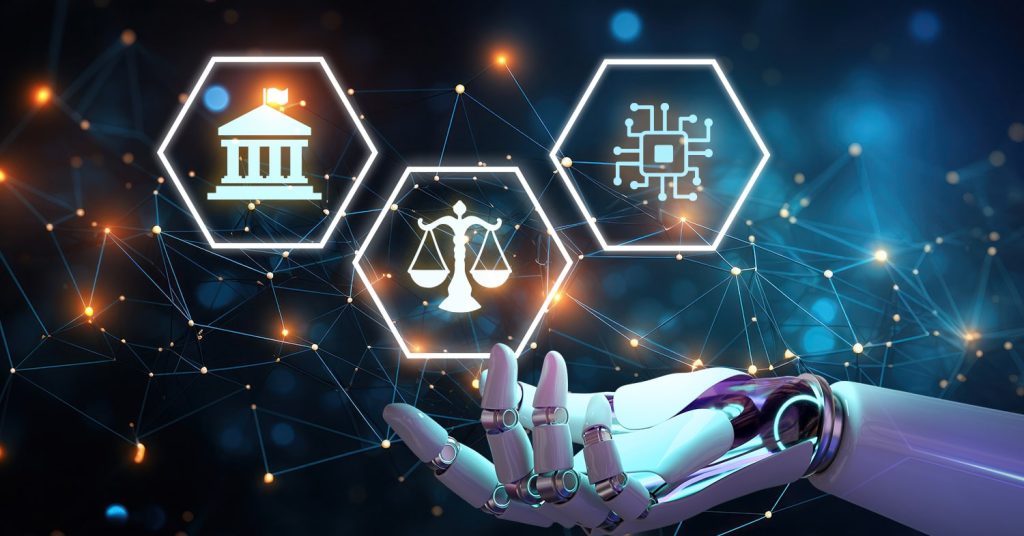The Future of AI in the Courtroom: Threat or Tool?
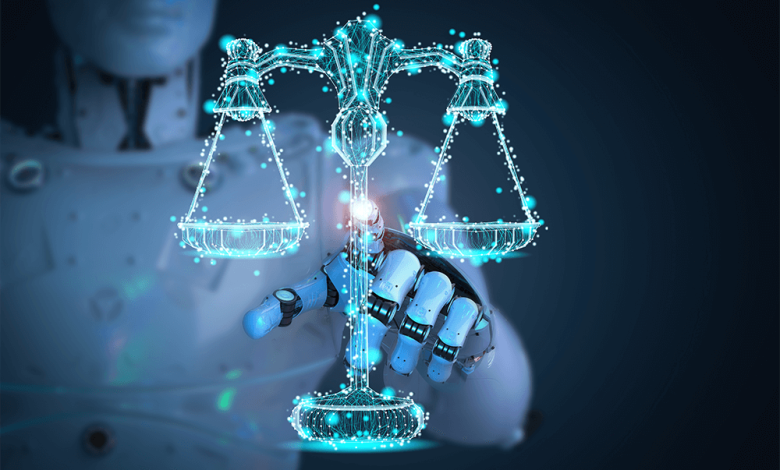
The future of AI in courtroom technology is rapidly unfolding, promising to transform how justice is administered worldwide. AI’s potential to enhance efficiency, accessibility, and decision-making is enormous, but concerns about reliability, ethics, and fairness raise important questions: Is AI a powerful tool to improve justice, or a threat that could undermine legal integrity?
This article explores the future of AI in courtroom applications, balancing opportunities with challenges, supported by case studies, expert insights, and practical considerations.
What Is the Future of AI in Courtroom Technology?
The future of AI in courtroom refers to how artificial intelligence systems will be integrated into judicial processes, including legal research, evidence analysis, case management, and even decision support. AI tools range from natural language processing systems that analyze legal documents to avatars that communicate rulings to the public.
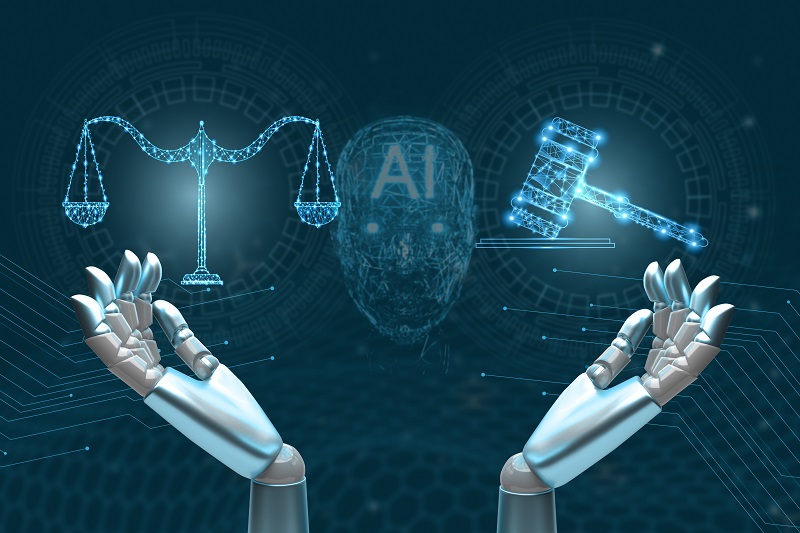
Current AI Applications in Courts
- AI-powered legal research assistants that quickly analyze case law.
- Virtual avatars delivering court rulings (e.g., Arizona Supreme Court’s AI avatars).
- Automated scheduling and case management systems.
- Predictive analytics for case outcomes and sentencing recommendations.
Benefits of AI as a Powerful Tool in the Courtroom
1. Enhancing Efficiency and Speed
AI can process vast amounts of legal data far faster than humans, reducing backlogs and speeding case resolution.
2. Improving Access to Justice
AI-powered virtual assistants and avatars can help explain rulings and procedures to the public, making courts more accessible.
3. Supporting Legal Professionals
AI tools assist judges and attorneys by summarizing documents, identifying relevant precedents, and highlighting inconsistencies.
4. Data-Driven Decision-Making
Predictive AI can analyze trends and suggest fairer sentencing or bail decisions based on historical data.
Threats and Challenges: Is AI a Risk to Justice?
1. AI Hallucinations and Errors
AI systems sometimes generate inaccurate or fabricated information (“hallucinations”), which can mislead legal decisions.
2. Bias and Fairness Concerns
AI trained on biased data may perpetuate or amplify racial, gender, or socioeconomic biases in sentencing or case outcomes.
3. Lack of Transparency
Many AI algorithms operate as “black boxes,” making it difficult to understand or challenge their recommendations.
4. Ethical and Legal Accountability
Who is responsible if AI-assisted decisions cause harm? The lack of clear accountability raises concerns.
5. Undermining Human Judgment
Overreliance on AI may reduce critical human oversight and empathy essential to justice.
Case Studies Highlighting the Future of AI in Courtroom
Case Study 1: New York Court’s AI Avatar Incident (March 2025)
Jerome Dewald attempted to use an AI-generated avatar to present his argument without prior court approval. The court halted the presentation, emphasizing transparency and human oversight. This incident underscores the tension between AI innovation and courtroom ethics.
Case Study 2: Arizona Supreme Court’s AI Avatars
The Arizona Supreme Court uses AI avatars named Victoria and Daniel to communicate rulings to the public. This innovative use improves transparency and accessibility, demonstrating AI’s positive potential.
Case Study 3: ChatGPT Legal Citation Controversy
In 2023, attorneys were fined for submitting AI-generated fake legal citations. This case highlights risks of unchecked AI use and the need for rigorous human review.
How Courts Are Preparing for the Future of AI in Courtroom
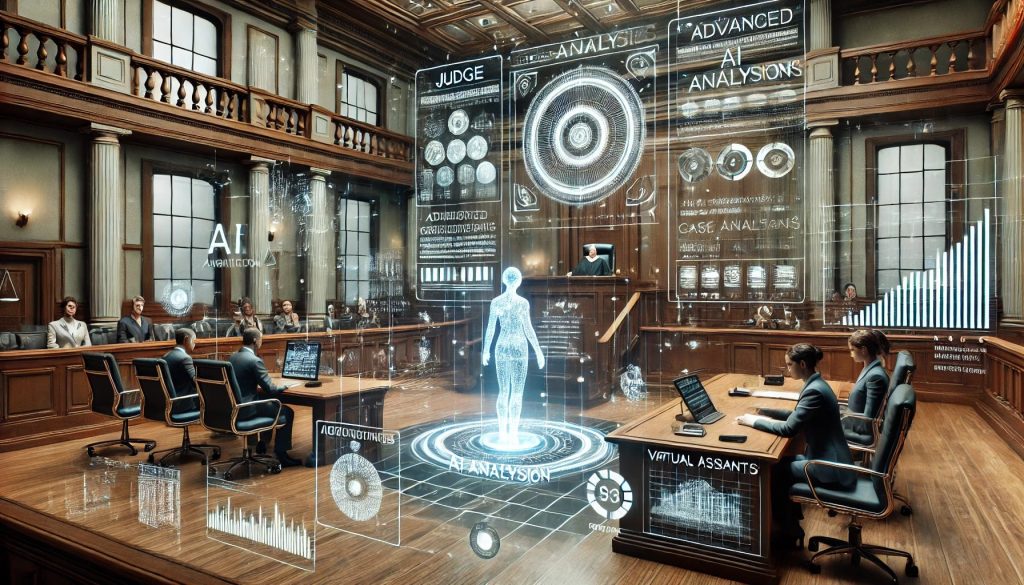
Regulatory and Ethical Guidelines
- Practice directions (e.g., Caribbean Court of Justice’s 2025 guidelines) restrict AI use in affidavits and evidence generation.
- Judicial committees worldwide are developing AI policies emphasizing transparency, accountability, and human control.
AI Advisory Boards and Reports
- The Artificial Intelligence Advisory Board (AIAB) monitors AI tools in judiciary systems, ensuring ethical deployment.
- Annual reports assess AI’s impact and emerging challenges.
Training and Awareness
- Judges and court staff receive training on AI capabilities and limitations.
- Emphasis on AI as an assistant, not a replacement for human judgment.
Comparing AI Benefits and Threats in Courtrooms
| Aspect | Benefits (Powerful Tool) | Threats (Risks) |
|---|---|---|
| Efficiency | Speeds up research and case management | Errors can mislead decisions |
| Access to Justice | Enhances public understanding through avatars | Digital divide may exclude some users |
| Bias | Data-driven fairness potential | Risk of perpetuating existing biases |
| Transparency | Clear communication of rulings | Black-box AI reduces explainability |
| Accountability | Supports judges with data | Unclear responsibility for AI errors |
| Human Oversight | Frees humans for complex judgment | Overreliance may reduce critical thinking |
Practical Recommendations for Embracing AI in Courtrooms
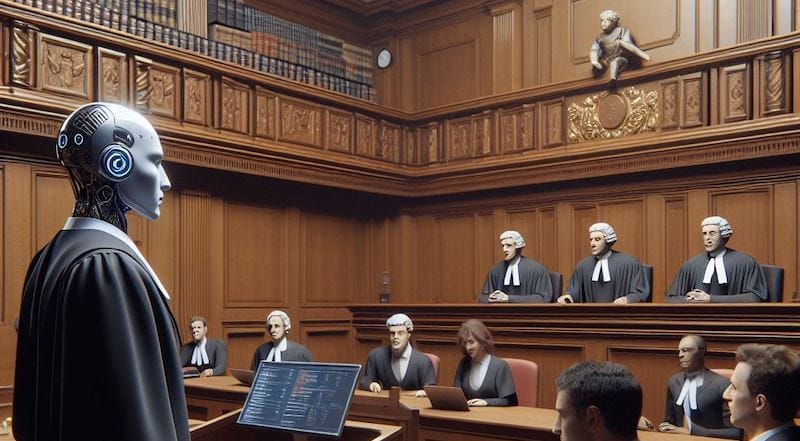
For Judges and Lawyers
- Use AI as a supplementary tool, not a decision-maker.
- Always verify AI-generated information.
- Advocate for transparency in AI algorithms.
For Court Administrators
- Invest in AI training and infrastructure.
- Develop clear policies governing AI use.
- Engage communities to ensure equitable access.
For Policymakers
- Enact laws ensuring AI accountability and fairness.
- Support research on AI bias reduction.
- Promote international cooperation on AI standards.
The Future Outlook: Threat or Tool?
The future of AI in courtroom technology is neither purely a threat nor an unqualified tool—it is a powerful force that requires careful, ethical integration. When implemented with transparency, human oversight, and robust safeguards, AI can enhance justice systems worldwide. However, ignoring risks like bias, errors, and accountability gaps could undermine trust in courts.
The Role of Explainable AI in the Courtroom: Building Trust and Transparency

What Is Explainable AI?
Explainable AI (XAI) refers to AI systems designed to provide clear, understandable explanations for their decisions and recommendations. In the courtroom, explainability is crucial because legal decisions must be transparent and justifiable.
Why Explainable AI Matters in the Future of AI in Courtroom
- Enhances Judicial Trust: Judges, lawyers, and defendants need to understand how AI reached a conclusion to trust its input.
- Supports Fairness: Transparent AI helps detect and correct biases or errors.
- Enables Accountability: When AI decisions can be explained, it’s easier to assign responsibility and challenge unfair outcomes.
Challenges to Implementing Explainable AI
- Complex AI models like deep learning are often “black boxes.”
- Balancing accuracy with explainability can be difficult.
- Legal professionals may require training to interpret AI explanations effectively.
Case Study: Explainable AI in Sentencing Recommendations
A pilot program in a European court used XAI to provide judges with clear reasoning behind AI sentencing suggestions. Judges reported higher confidence and better ability to question AI outputs, improving decision quality.
Ethical Considerations for AI Use in the Courtroom
Key Ethical Issues
- Bias and Discrimination: AI trained on biased data can perpetuate systemic inequalities.
- Privacy: AI systems process sensitive personal data that must be protected.
- Consent: Defendants and litigants should be informed when AI influences decisions.
- Human Dignity: AI should not replace human empathy and moral judgment.
Frameworks Guiding Ethical AI in Courts
- The IEEE Global Initiative on Ethics of Autonomous and Intelligent Systems recommends principles like transparency, accountability, and fairness.
- The EU’s Ethics Guidelines for Trustworthy AI emphasize human oversight and respect for fundamental rights.
How Courts Can Address Ethical Challenges
- Implement bias audits and continuous monitoring of AI tools.
- Ensure AI use complies with data protection laws.
- Provide clear disclosures to court users about AI involvement.
- Maintain human control over final decisions.
Training Judges and Legal Professionals for the AI-Enabled Courtroom
Why Training Is Critical
The future of AI in courtroom depends on legal professionals’ ability to understand and effectively use AI tools. Without proper training, AI risks being misunderstood or misapplied.
Components of Effective AI Training
- Basic AI Literacy: Understanding AI capabilities, limitations, and common pitfalls.
- Interpreting AI Outputs: Learning how to read and question AI-generated reports or recommendations.
- Ethical and Legal Implications: Awareness of privacy, bias, and accountability issues.
- Hands-On Experience: Practical sessions with AI tools to build confidence.
Case Study: Judicial AI Training Program
A national judicial institute launched a comprehensive AI training program for judges and clerks, resulting in improved AI adoption and more informed courtroom decisions.
International Perspectives on AI in the Courtroom
How Different Countries Approach AI Integration
- United States: Focus on pilot programs and AI-assisted legal research; cautious about fully automated decisions.
- European Union: Strong emphasis on ethics, transparency, and human rights in AI use.
- China: Rapid adoption of AI in court management and virtual judges, with less public debate on risks.
- Africa: Emerging initiatives balancing innovation with challenges like digital infrastructure and legal frameworks.
Global Cooperation for AI Standards in Justice
International bodies like the United Nations and the International Bar Association are working to harmonize AI ethics and standards to ensure fair and consistent judicial AI use worldwide.
The Impact of AI on Legal Costs and Access to Justice
Reducing Costs Through Automation
AI can automate routine tasks such as document review and case scheduling, reducing legal costs and making justice more affordable.
Expanding Access to Justice
AI-powered chatbots and virtual assistants can help self-represented litigants understand procedures and prepare documents, increasing access for underserved populations.
Risks of Digital Divide
Unequal access to technology may widen justice gaps if AI tools are not made accessible and inclusive.
AI Applications in the Courtroom – Benefits vs. Risks
| AI Application | Benefits | Risks |
|---|---|---|
| Legal Research Tools | Faster, comprehensive case law analysis | Overreliance, potential errors |
| Virtual Court Avatars | Improved accessibility and communication | Lack of human empathy, technical glitches |
| Predictive Sentencing | Data-driven, consistent sentencing | Bias amplification, reduced judicial discretion |
| Case Management Systems | Efficient scheduling and document handling | Privacy concerns, system failures |
| Automated Evidence Review | Speeds up discovery, reduces workload | Missing context, false positives/negatives |
How the Future of AI in Courtroom Will Transform Legal Research
One of the most significant ways the future of AI in courtroom technology will impact the justice system is through transforming legal research. AI-powered tools can analyze thousands of cases, statutes, and legal documents in seconds, providing judges and lawyers with relevant precedents and insights faster than ever before.
By leveraging AI, the future of AI in courtroom applications will reduce the time spent on manual research, allowing legal professionals to focus on case strategy and client interaction. This shift will not only improve efficiency but also enhance the quality of legal arguments.
However, as the future of AI in courtroom unfolds, it is vital to ensure that AI systems are trained on unbiased and comprehensive legal data to avoid skewed research results that could influence court decisions unfairly.
The Future of AI in Courtroom: Enhancing Evidence Analysis and Presentation
The future of AI in courtroom also includes advanced evidence analysis capabilities. AI can sift through large volumes of digital evidence such as emails, videos, and social media posts to identify relevant information quickly.
With AI-powered analytics, the future of AI in courtroom promises more accurate and objective evidence evaluation, reducing human error and bias. AI tools can also help visualize complex data, making it easier for judges and juries to understand technical evidence.
Despite these benefits, the future of AI in courtroom must address challenges related to the admissibility of AI-analyzed evidence and ensure transparency in how AI reaches its conclusions.
Addressing Ethical Concerns in the Future of AI in Courtroom
As the future of AI in courtroom technology advances, ethical concerns become increasingly important. Ensuring fairness, transparency, and accountability in AI-assisted judicial processes is critical.
The future of AI in courtroom must include mechanisms to detect and mitigate bias in AI algorithms. Courts will need clear guidelines on how to interpret AI recommendations and maintain human oversight to prevent overreliance on automated systems.
Public trust in the future of AI in courtroom depends on ethical deployment, where AI serves as a tool to support, not replace, human judgment.
Training Legal Professionals for the Future of AI in Courtroom
Preparing judges, lawyers, and court staff for the future of AI in courtroom is essential for successful integration. Training programs focused on AI literacy, ethical considerations, and practical use cases will empower legal professionals to use AI tools effectively.
The future of AI in courtroom will require ongoing education as AI technology evolves, ensuring that legal practitioners understand both the capabilities and limitations of AI.
Case Study: Early Adoption of AI Tools and the Future of AI in Courtroom
A notable example illustrating the future of AI in courtroom is the pilot program in the Netherlands, where AI-assisted legal research tools reduced case processing times by 30%. Judges reported that the AI’s ability to highlight relevant precedents improved decision accuracy.
This case demonstrates how the future of AI in courtroom can enhance judicial efficiency while highlighting the importance of combining AI insights with human expertise.
Key Areas Impacted by the Future of AI in Courtroom
| Area | Impact of Future of AI in Courtroom | Benefits | Challenges |
|---|---|---|---|
| Legal Research | Faster, comprehensive analysis | Time savings, improved accuracy | Data bias, overreliance |
| Evidence Analysis | Automated sorting and evaluation | Objectivity, efficiency | Transparency, admissibility issues |
| Sentencing Recommendations | Data-driven suggestions | Consistency, fairness | Bias amplification, accountability |
| Courtroom Communication | AI avatars and virtual assistants | Accessibility, clarity | Lack of empathy, technical failures |
| Case Management | Automated scheduling and document handling | Efficiency, reduced backlog | Privacy concerns, system error |
Conclusion
The future of AI in courtroom applications holds transformative potential. By embracing AI as a powerful assistant and addressing its threats proactively, courts can improve efficiency, accessibility, and fairness. The path forward demands collaboration among technologists, legal professionals, and policymakers to ensure AI serves justice—not threatens it.

